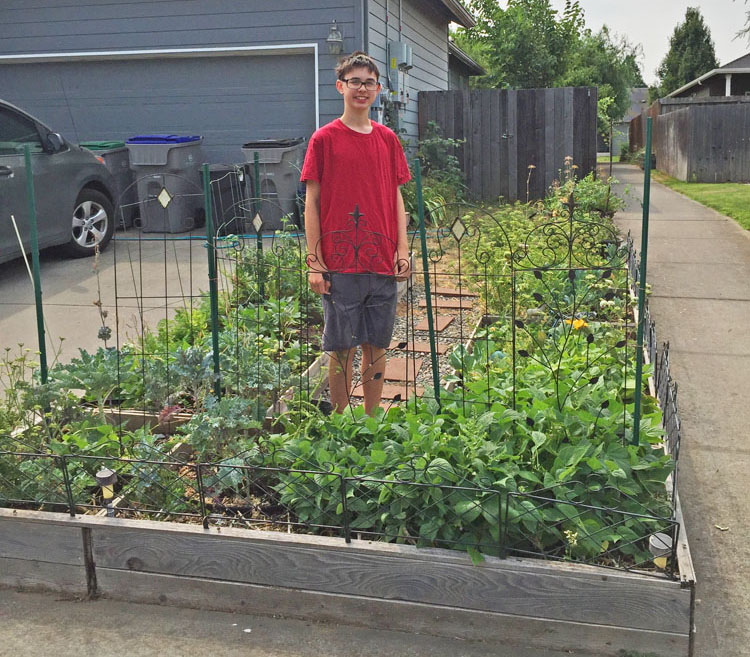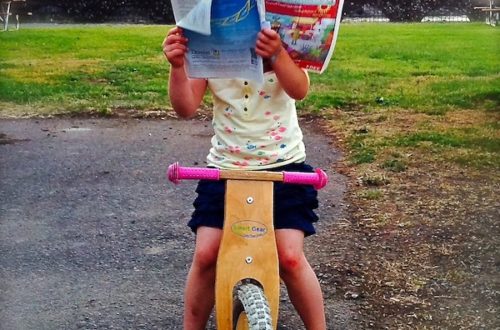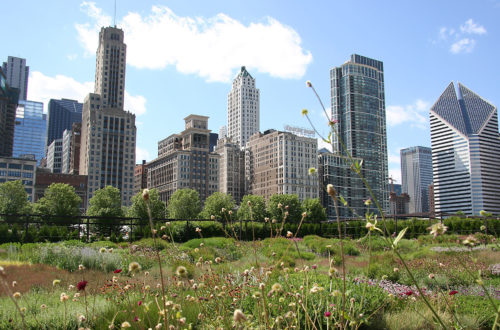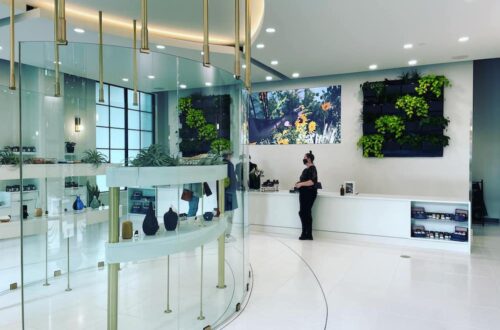When my parents first took out our front lawn for a fruit and veggie garden and planted grape vines in our backyard, I didn’t really understand their purpose. I was five years old! I was told the plants could provide food and shade.
I was curious about the beings living in the soil. I also loved going to the Hood River Farmers’ Market for the food and music, and saw people selling their own produce at booths. That’s what got me thinking that maybe I could sell my own produce at the market and make some money!
Sometimes I wondered why fresh-picked organic food cost so much. I thought it was easy to make money, because all I would have to do was go out and pick it. I soon found that a lot more work was involved in selling at the market than I anticipated when I started selling produce at the end of the summer of 2016.
On Saturdays, I would wake up at 7:30 a.m., get out a stepladder, and start gingerly picking my figs and baby kiwis, trimming my grape bunches, soaking them in water to clean them, picking out the bad ones, then getting to the market. Next was weighing, pricing, and standing at the table for hours with my brother selling our produce.
After all the work from 7:30 a.m. to 1 p.m., I estimated that I made $5 an hour (after giving 10 percent of the profits to the  market). That wasn’t even counting watering and plant maintenance by my family, but this was a good profit for a 12-year old.
market). That wasn’t even counting watering and plant maintenance by my family, but this was a good profit for a 12-year old.
This summer I decided to dedicate more of my time to caring for the plants themselves and to learn more about the journey from seed to fruit.
In our .17 acre city lot we get 4 kinds of grapes, kiwis, figs, plums, raspberries, blackberries, currants, blueberries, kale, chard, herbs, beans, carrots, tomatoes, potatoes, lettuce, and more. Most of it is eaten by our family.
A lot of time is required to water, care for, trim, inspect, and harvest your plants and its bounty -not to mention that at any time your plants could get a serious disease or insect infestation. This summer, some of our grapes have powdery mildew and a bug is eating the leaves. It is worrisome. We also won’t get any kiwis to sell this year, probably due to a lack of pollination of the male and female plants. You have to be dedicated to grow crops.
However, there are many environmental benefits to growing a garden. It is estimated that if every lawn in America was a fruit and veggie garden, there would be enough food to feed the entire country. Gardens also: keep more CO2 out of the air, encourage pollinators to stay, and provide habitat.

When food is bought at the farmers market, more money stays in the economy. It tastes better. It’s a win-win for everybody. I believe that with all the problems in the world, growing a garden is helpful, because it fixes multiple problems at once!
Selling produce for the first time taught me the importance of time and resources, but it also taught me how important local farmers are to the economy. Head down to the farmers’ market sometime, and try some of my delicious goods!
D.C. Ruhlen, age 13, is a Hood River native. Besides growing food in the backyard, he also helps out at his parent’s hobby shop in Hood River and loves playing board games and trading card games. He also enjoys playing jazz saxophone, studying martial art, and hanging out with his family. This year he has written two stories for EnviroGorge. This piece about growing your own food as well as another called “The Poo-Poo Project” about birds getting stuck in pipes of vault toilets and how to prevent it. Look forward to more stories from D.C. at EnviroGorge.com






